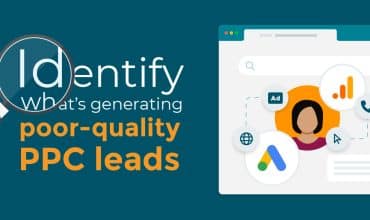Trends to watch for in 2021: The rise of nocalism
“Never put a timeframe on your predictions and you will always be right!” This was an essential piece of management advice I was given by a former boss.
So here I am, breaking this rule, to make my prediction for 2021. And just like the Radio 4 racing tips, you can take me to task at the end of the year and see how accurate I was!
2020 was the ABC year: A for anxiety caused by B for Brexit and C for Covid!
Despite all the anxiety created by B and C, we’re a resilient lot, and most of us are still here to fight another day.
The key point to 2020 – from a personal and business perspective – was that there were some significant tipping points caused by rapid adoption of technology. The most evident being the use of video telephony and screen sharing technology – MS Teams, Zoom, or similar platforms.
Although lockdowns have created isolation, at the same time we’ve never been closer to our fellow humans.
There was also an increased interest in marketing attribution technology and linking revenue to marketing activity.
At the start of lockdown, most organisations immediately implemented cost-saving measures, such as furloughing staff and reducing unnecessary spend. Marketing budgets were particularly hard hit. However, for companies able to keep operating throughout lockdown, it was important to attribute the source of the enquiries. They needed to know which marketing activities were driving these precious enquiries, to ensure that they didn’t cut the budgets in areas that were essentially keeping them afloat.
I predict 2021 will be the year of ‘nocalism’
‘What’s that horrible word?’ I hear you say! It’s a combination of national reach and satisfying local desire. We’ve all (including my octogenarian parents) grasped the national scale the internet provides. However, where possible, we’re more consciously trying to keep our spend local.
Let’s look at nocalism in more depth…
National reach
Because of Covid-19, we’ve all had to endure lockdowns. This has meant that, as a nation, we’ve become extraordinarily internet and technology savvy.
According to the 2020 Ofcom Communications report, video subscription services have grown by 27%. Zoom saw its market capitalisation grow by over 400%, and currently has a valuation of over $100 billion.
The internet has become critical to our home-based needs and entertainment. We can find anything we want, anywhere, without leaving our Covid-enforced confinement.
As individuals and businesses – and probably for the first time in history – we now have what economists refer to as ‘perfect information’ for many goods and services. Perfect information means that consumers and producers have real-time knowledge of market prices along with their value and worth.
It’s important because it also means that consumers have a much better understanding of the value they put on spending their money at a local or national level.
Local desire
This is where local desire has become all important. Due to the restrictions imposed by COVID-19 and the restrictions on travel, we’ve become much more community focused.
People have shunned public transport and reduced their travelling unless absolutely necessary. They’ve embraced localism. This has been particularly true for buying goods and services from local suppliers. While Amazon might have boomed, there are numerous examples of businesses that have suddenly grown through local support. It’s given them opportunities to innovate in order to service consumers further afield and grow their customer base.
For instance, where I live in Kent, several farm shops have put their produce online and seen their turnover explode. Our local farmers market has gone virtual and seen trade increase. They’ve also started providing a click and collect facility on the day of the market.
In another example, a dog training company based in Milton Keynes had a wholly local customer base, with all training sessions taking place in person. They took their training sessions online during the first lockdown and expanded their customer base with new clients from all over the country.
How nocalism will affect businesses in 2021
We’ll travel less, but still require cars for local journeys
This is why the used car market has remained strong. With Brexit done, people will move to new cars as manufacturers push them into the UK with great offers.
Consumers will shy away from larger retailers in favour of local businesses for their direct needs
They’ll spend more time on the internet researching, and only connecting with a business when they’re ready to buy. The crucial point here is that when you are contacted by a prospect, they’re a hot lead and want to spend money with you. However they choose to get in touch with you, it’s imperative that you:
- Answer and respond to calls, emails, and live chat, quickly and effectively
- Capture and attribute those enquiries to the marketing sources responsible for delivering them to you
- Link revenue to marketing activity to improve your return on investment.
Video conferencing will continue to rise
This is viewed as a personal thing by consumers, and something they do with their friends. There’ll be significant growth in business-to-business video communications, yet the phone will still be the most important tool for instant communication. In 2019 according to OFCOM there was nearly 200 billion minutes of talk time (38.97 billion on fixed lines and 161.78 billion on mobiles). Managing your phone process and attributing these enquiries will become even more vital.
Businesses with multiple units or locations (such as car dealers and care homes) will speed up their adoption of hub and spoke communications
The hub will take initial calls and pass those to the local spokes if required. The local spokes will focus on the local needs of their customers – walk-ins and click and collect. This is not an easy process to get right. Those that do it properly will have a significant competitive advantage over their rivals.
This is where effectively managing your local marketing, such as your Google My Business (GMB) listing, becomes crucial. Up to 60% of all calls originate from GMB listings. Local phone numbers are essential if you’ve got multiple locations. They reassure your customers that you can meet their desire to support local businesses, and you can easily and accurately track enquiries and sales back to your listings.
So there you have it – my predictions for 2021. Here’s to an exciting year, and I look forward to seeing how nocalism will change us all – both as consumers and in business.



